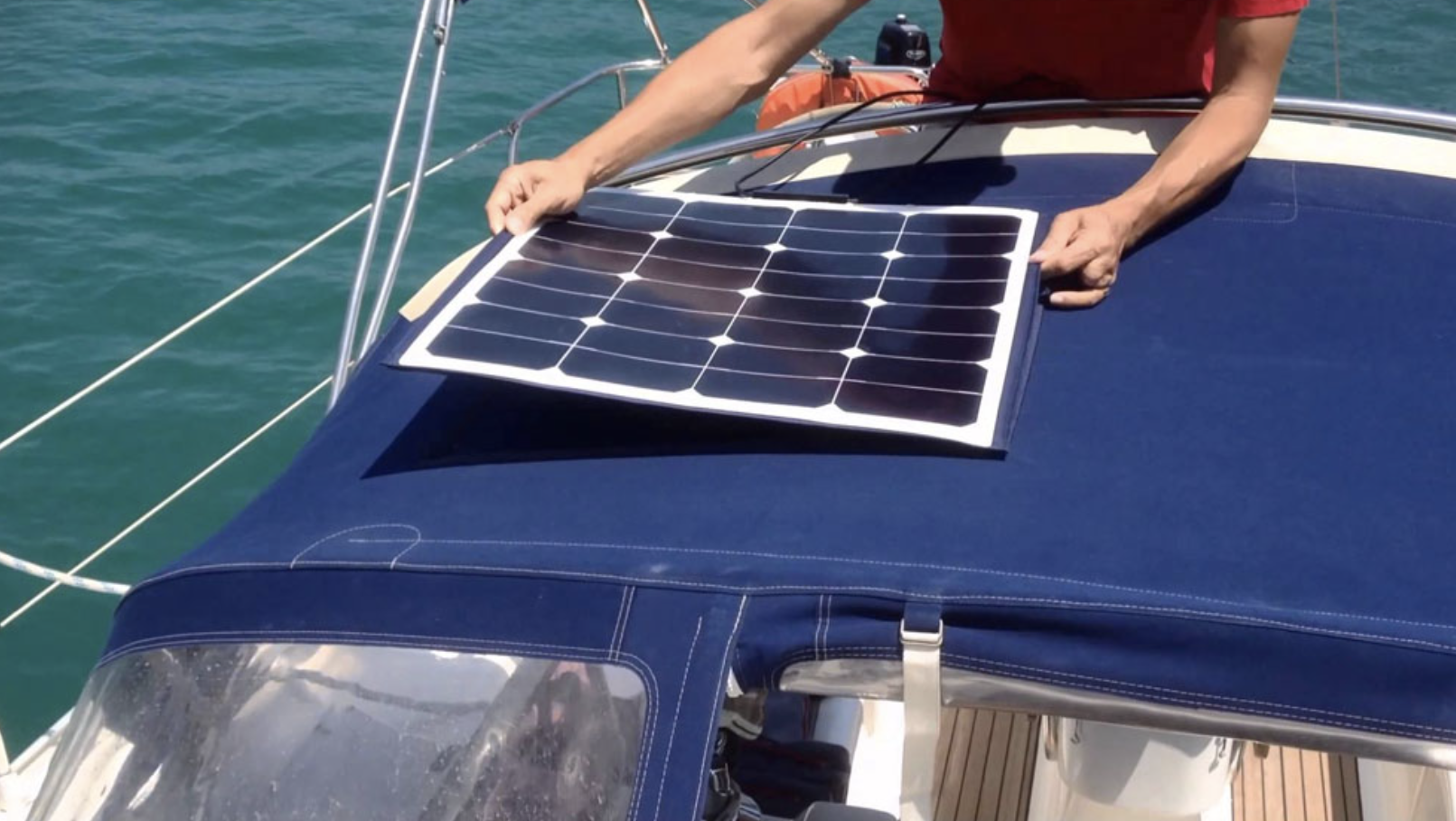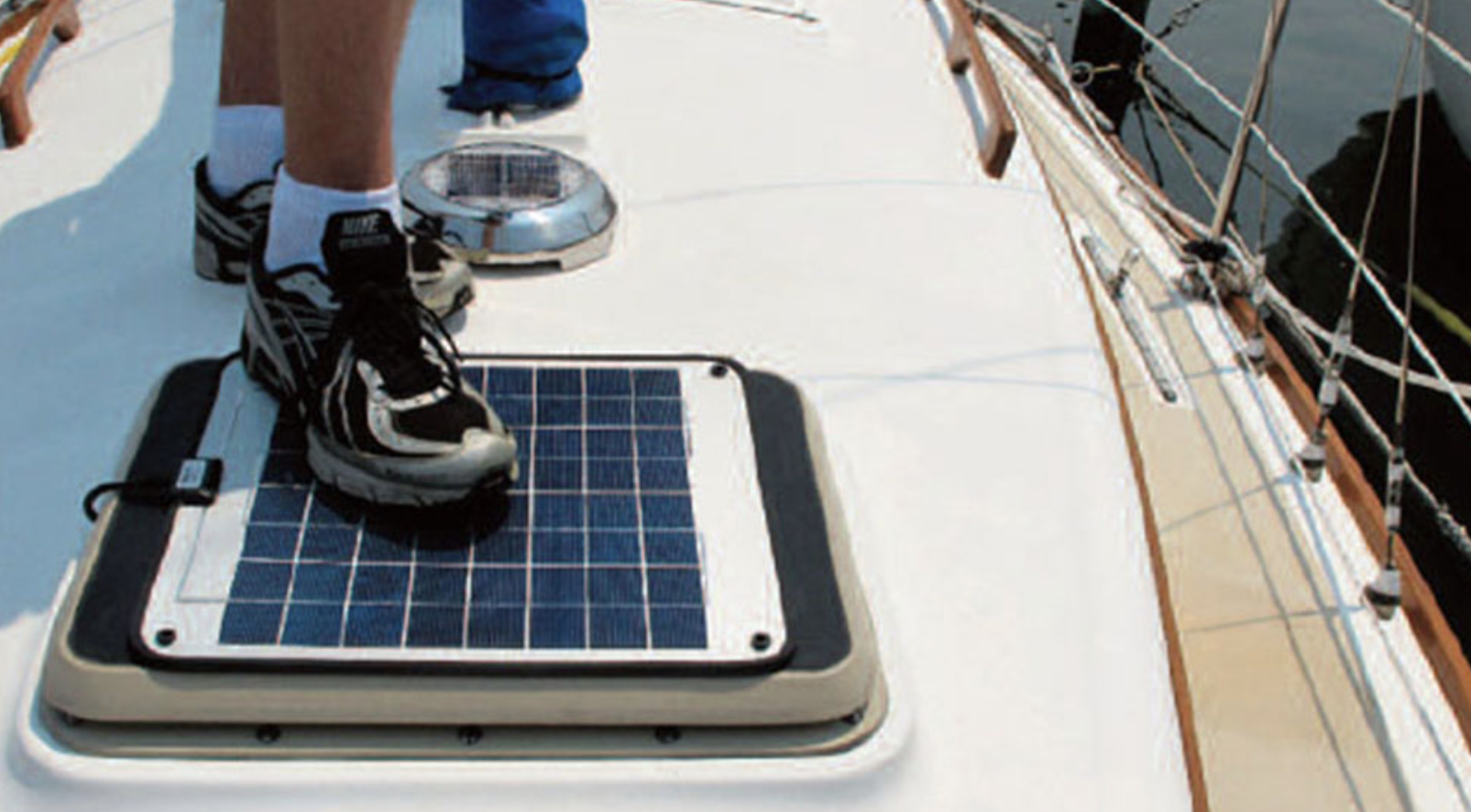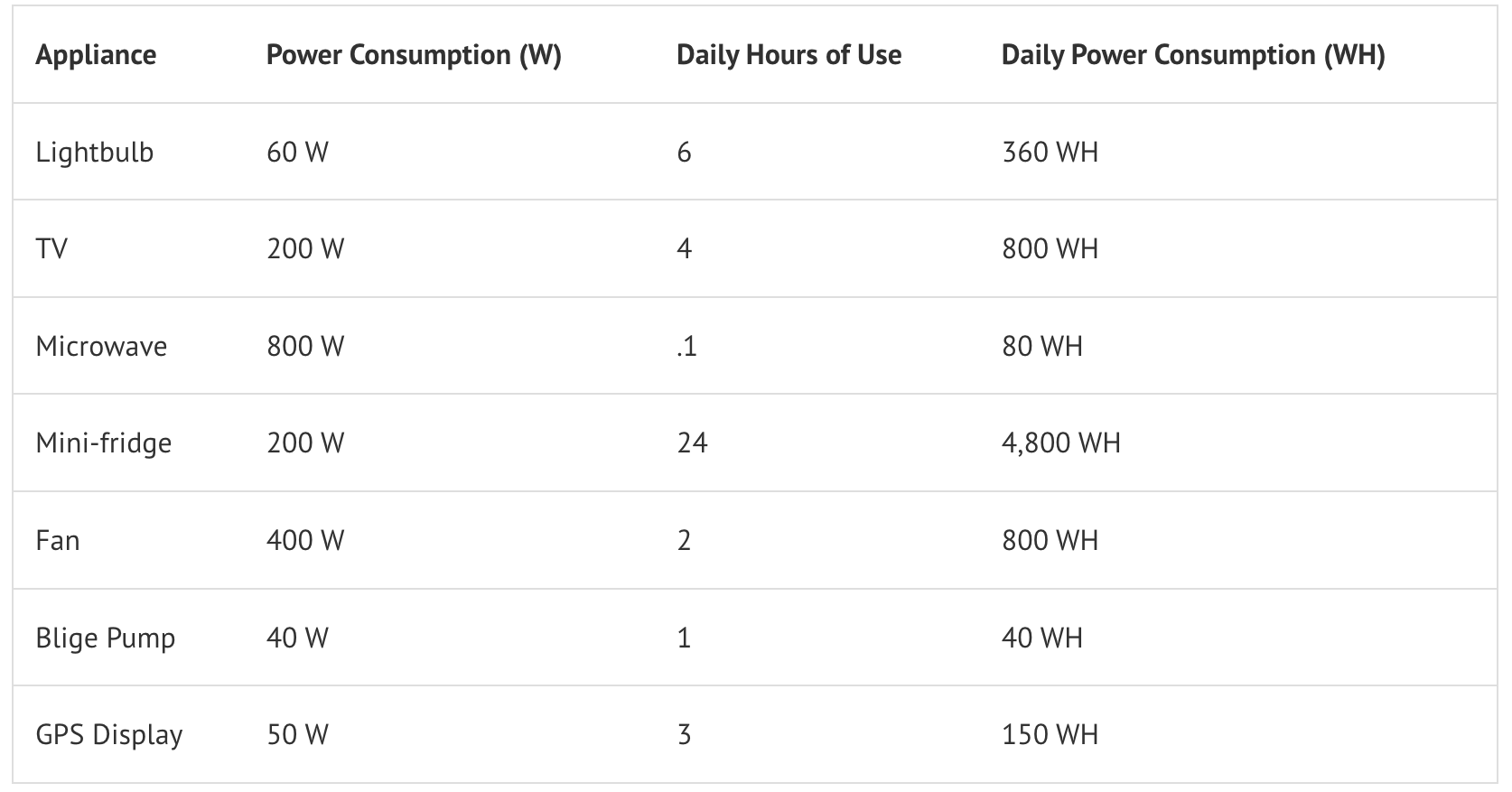Solar Power for Boats

Solar Power for Boats
Owning a boat can be an expensive proposition; not only do you have to pay an upfront cost to purchase it, but you’ll also have to spend money on maintenance and fuel charges. If you’re looking for a reliable and cost-effective way to power your boat, solar panels may be the answer.
Solar energy systems on boats work similarly to other portable, off-grid systems. There are four important components to a marine solar panel system:
- Solar panels
- Charge controller
- Inverter
- Battery
When sunlight hits a boat’s solar panels, it generates an electrical current. A battery stores this current so that you can use it to support your boat’s electricity needs. Most marine solar panel systems also require charge controllers to prevent the batteries from receiving more voltage than they’re capable of handling – without charge controllers, you risk overcharging and damaging your battery.
Depending on the electrical setup of your boat and the types of appliances you need to energise, you may also need an inverter to convert direct current (DC) electricity into alternating current (AC) electricity. Some boat electronics use DC and as such do not require an inverter with a solar panel setup.
However, if you use some everyday household appliances on your boat (i.e.TVs, microwaves,coffee machines or hairdryers), they likely run on AC electricity and you’ll need an inverter.
You can buy all of these components separately, but there are also solar panel kits available that include some or all of the necessary parts. Additionally, some marine solar panel kits also include the wires, cables, and mounting equipment necessary to get your boat’s solar panel system completely up and running.
If your solar panel kit does not include an inverter or charge controller, you’ll need to buy those components separately. Battery storage products occasionally have built-in inverters and/or charge controllers.

Types of Solar Panels
Two types of panels use either silicon crystals or thin chemical films to generate electricity.
Mono-crystalline and multi-crystalline (c-Si) panels are the oldest technology and also the most powerful. When sized correctly and matched to appropriate batteries, these are the panels to use for running large DC loads such as lights, a TV, radio or VCR.
In crystalline panels, silicon, the primary material in quartz sand, is grown into crystals, refined, purified (by an expensive process), sliced into thin wafers and “doped” with the addition of chemicals.
Solar cells create electrical current, the quantity determined by the size and efficiency of the cell and the amount of light. Solar modules are created by connecting cells in parallel to increase amperage and in series to increase voltage. Typical solar modules have 30 or 36 cells (generating between 14 and 18V DC).
Amorphous thin film Silicon (a-Si) panels are only about 50% as efficient as multi-crystalline panels but can be manufactured in flexible forms so they can roll or fold, or conform to the shape of a cabin top. They are more efficient in low or diffused light conditions and are less subject to voltage drops when they heat up.
They’re the panels most often used for low amperage charging and battery maintenance. They don’t have enough output for serious energy replenishment but can be used to “float” or trickle charge a battery.
Thin film panels require lower manufacturing costs than c-Si panels like the Nature Power panels (with 45% of crystalline panel cost coming from making the raw silicon crystal structure).
Should You Install Solar Panels On Your Boat?
There are numerous benefits to powering your boat with solar energy. One of the most attractive benefits of marine solar power systems is the monetary savings. You’ll need to invest money upfront to purchase solar equipment; however, once it’s up and running, you’ll be generating free electricity for your boat.
Alternatives to electrifying your boat, like gasoline-powered generators, require purchasing fuel on an ongoing basis. Switching to solar power can cut down on these purchases while protecting you against rising fuel costs.
Another benefit of marine solar panel systems is the quietness of operation. For those going out on the open water to experience nature, running a generator can be a noisy disturbance. By powering your boat with solar, you can enjoy peace and quiet without losing power.
Furthermore, you can also safely generate electricity and charge your battery with solar power while you’re away from your boat. This isn’t feasible with generators – running a generator requires manual operation and monitoring. With solar panels, you can produce usable electricity during the day and then use it for weekend boating adventures.
However, there can be obstacles to installing solar on a boat, perhaps the largest of which is available space. Ideally, your solar panels can be installed in an area with uninterrupted sunshine. Depending on the type of boat you have, this space may be easy or difficult to come by.
While you likely get a lot of sun out on the water, the space it may be too small or have too many obstacles that make fitting the number of solar panels necessary to generate all of your electricity needs difficult.
When you’re looking for spots to install a marine solar panel system, consider your boat’s deck or canvas. Keep in mind that the positioning of your solar panels will also impact the type of equipment you should purchase – you may be able to use traditional monocrystalline and polycrystalline solar panels if you’re installing on a fixed, rigid section of your boat.
However, if your only open space available isn’t suitable for fixed mounting, then installing lower-efficiency flexible solar panels may be a better option. Some flexible solar options have an adhesive backing so you won’t need to worry about the constraints of traditional mounting and racking materials.
It is also important to keep your panels cool. It’s not easy to keep a black surface cool in the sun, but panel output goes down as temperature rises, so if you can provide some ventilation on the backside of the panel, you may be able to pick up a 5 or 10% increase.
How Many Solar Panels Do You Need For Your Boat?
Unsurprisingly, a power boat has very different power requirements than a sail boat. The number of solar panels you’ll need for your boat not only depends on the type and size of your boat, but also the quality of the equipment you choose, how many sun-hours the boat sees, and the amount of electricity you require.
Some boats can get by with one 100-watt solar panel (or even smaller), while others require a multi-panel setup.
The first step in figuring out how many solar panels you need is to calculate your electricity load. Below are some common appliances you may be using on your boat, and what they draw for power.
How many solar panels do you need for common appliances?

Regardless of why solar power is interesting to you, there is a robust and fascinating history behind solar’s rise to relevant status. Solar has a long list of meanings in today’s day and age. It spans various industries and contributes power to hundreds of different gadgets and technologies and boating s no different.